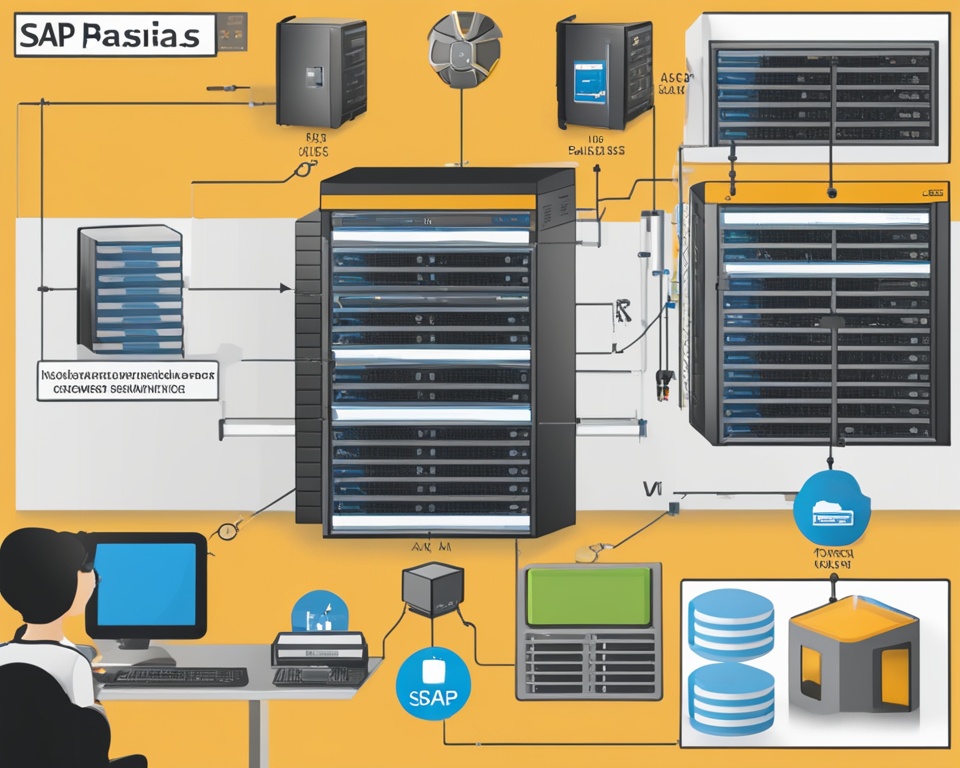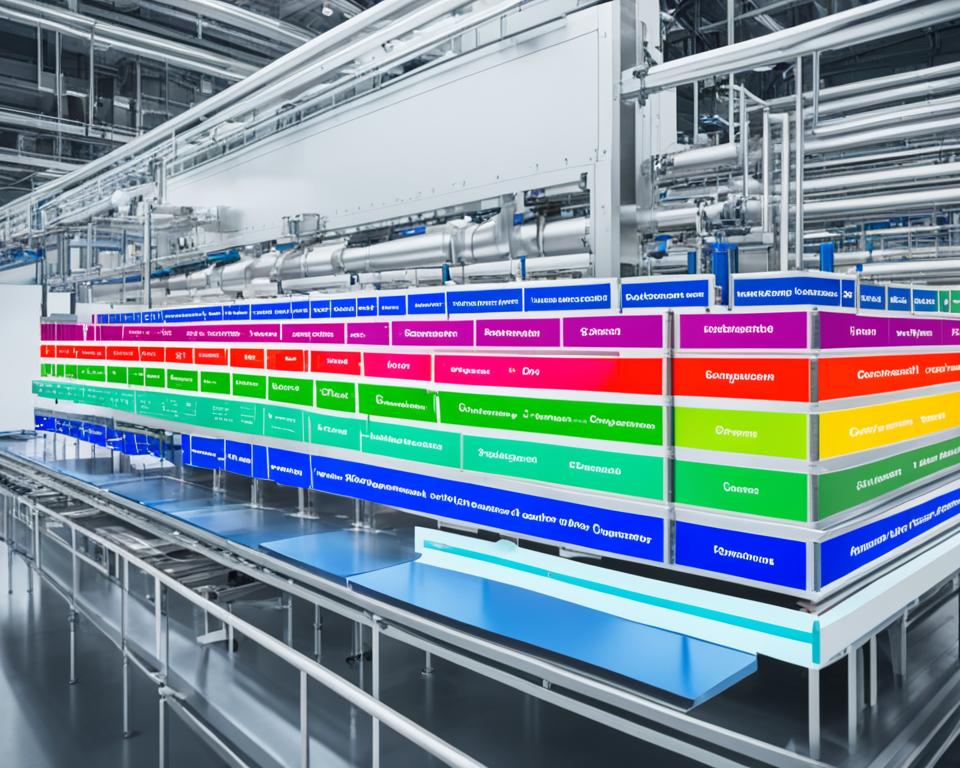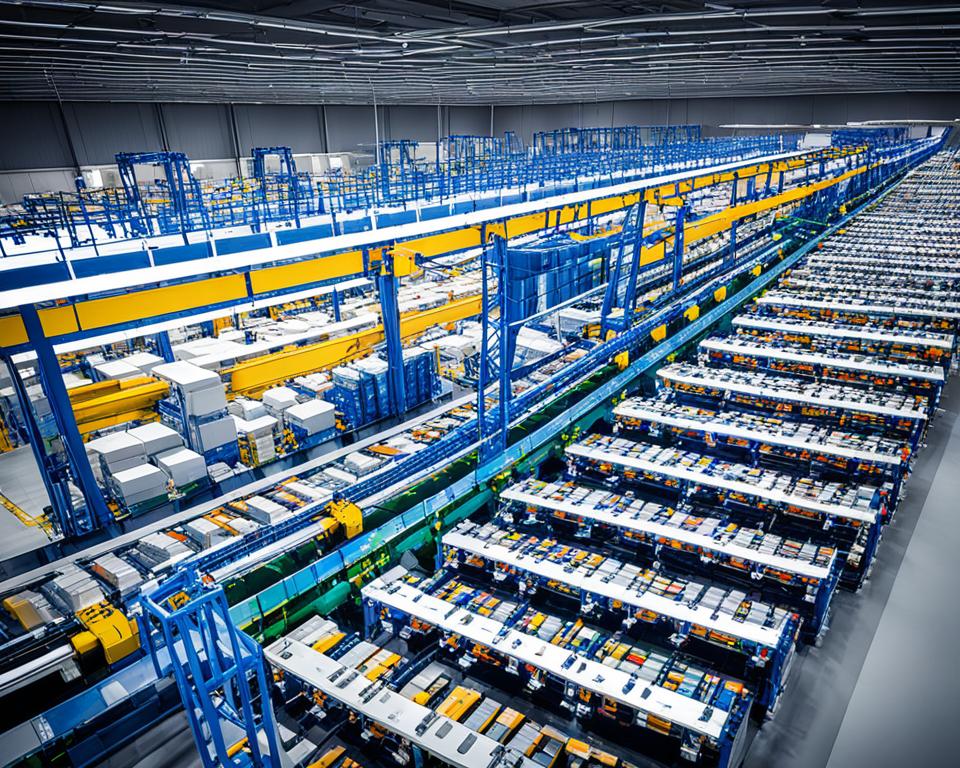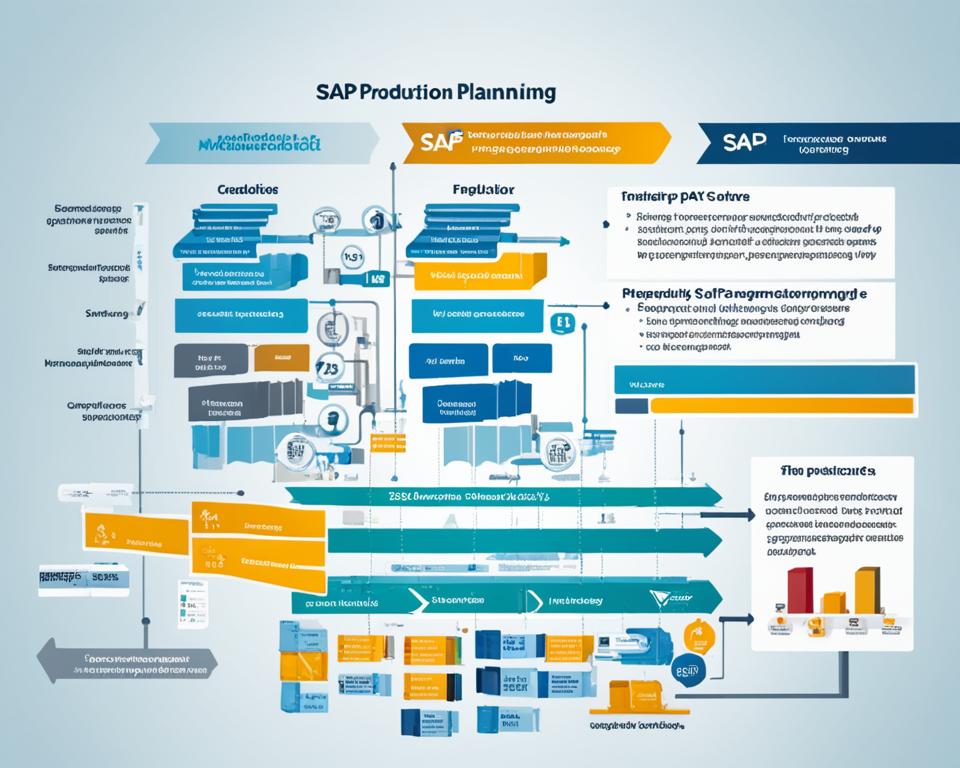Ever thought about how SAP BSI – Business Suite Infrastructure can boost your company’s performance? It’s key to know how SAP BSI works to make your business run smoothly. I’ll share my expert insights on this important tool. You’ll see how it helps your business work better and more efficiently.
Key Takeaways
- The importance of SAP BSI in enhancing system efficiencies.
- Understanding key components that contribute to effective integration.
- Benefits of optimizing business processes through SAP BSI.
- Strategies for achieving peak performance in your SAP landscape.
- Expert tips on leveraging SAP BSI for operational excellence.
Understanding SAP BSI – Business Suite Infrastructure
SAP Business Suite Infrastructure is key to the SAP world. It supports many business tasks. Knowing what SAP BSI is, its main parts, and its benefits is important. It helps make business operations smoother and better at managing data.
Definition and Components of SAP BSI
SAP Business Suite Infrastructure helps make SAP applications work better together. It has several parts:
- Data Management: Keeps data consistent and correct across SAP systems.
- Application Integration: Makes sure different applications talk to each other well.
- Business Process Management: Helps design and run business workflows.
These parts help companies use SAP to its fullest. Learning more about SAP BSI can show how to use it well.
Key Benefits of SAP BSI
SAP BSI offers big advantages for businesses. It makes operations run better. With SAP BSI, companies can:
- Improve Data Management: Handling data right is key for smart business choices.
- Streamline Business Processes: Better workflow cuts down on waste and boosts output.
- Improve Decision-Making: Good data leads to better planning and action.
SAP BSI has changed the game for many companies, bringing them more efficiency and consistency. For those wanting to grow their skills, checking out custom reporting in ABAP can be really helpful.
Importance of SAP NetWeaver in Business Suite Infra
SAP NetWeaver is key to Business Suite Infra’s success. It helps different SAP apps and non-SAP systems talk to each other smoothly. This makes businesses run better. By letting companies change their workflows, SAP NetWeaver encourages new ideas and makes processes more efficient. Its special features show why it’s so important in the SAP world.
Role of SAP NetWeaver
SAP NetWeaver is the base for SAP apps. It makes system integration easy across different places. This helps businesses bring together separate systems and make things run smoother. It gives companies a strong framework to match their tech with their business goals. With a focus on doing things better, using SAP NetWeaver is key for staying ahead.
Integration Features
This platform has many features that help with integration. Some main ones are:
- Support for various protocols to work with different systems.
- Advanced middleware for quick data sharing.
- Tools for managing workflows and business rules.
These features make data more consistent and systems run better. Companies can get a big boost in efficiency by using SAP NetWeaver’s tools. For more on how businesses use these features, see this detailed overview.

| Feature | Description |
|---|---|
| Data Synchronization | Ensures consistent data across systems with real-time updates. |
| Process Integration | Facilitates seamless automation and coordination between processes. |
| Custom Development | Allows businesses to tailor applications to specific needs using ABAP. |
| Cross-Platform Support | Integrates various technologies and platforms within the business landscape. |
Building Your SAP System Landscape
Creating a strong SAP system landscape is key for businesses wanting to work better. It’s important to plan carefully, thinking about how things will grow and work together. This planning helps make systems that meet your business goals.
Landscape Planning Essentials
My method for planning a landscape starts with looking at important factors. These factors shape the SAP system landscape’s structure and how well it works. They include:
- Identifying what the business needs and aims for.
- Checking the current setup to see if it fits with SAP.
- Following industry standards for the best practices.
These steps help cut costs and improve relationships with suppliers. Tools like Ariba Supplier Collaboration make communication and work flow better in the supply chain.
Architecture Considerations
Looking at architecture, I focus on key areas that affect the SAP system landscape:
- Scalability: The design should be ready to expand as the business grows.
- Performance: It’s crucial to have an architecture that supports fast and efficient work.
- Integration: Working well with other systems makes the whole system better and helps data move smoothly.
- Security: A strong security plan is key to keep data safe from threats.
Using best practices for SAP architecture helps me build a landscape that’s strong and efficient. I’ve seen how these principles work well in different industries.
Optimizing SAP Landscape Management Practices
Managing a SAP landscape well means knowing how to optimize it. Companies can make their SAP systems better by using specific strategies. This part talks about key methods and important tools that make things run smoother and faster.
Strategies for Effective Management
To make SAP landscape management better, I look at several main strategies:
- Regular Assessment of System Performance: Check systems often to find problems and ways to get better.
- Resource Allocation: Put resources where they are needed most, now and in the future, for the best performance.
- Automated Monitoring: Use automation to keep an eye on the landscape always, so you can act fast if something goes wrong.
- Change Management: Use a plan for handling changes to lessen risks during updates and changes.
Tools and Resources
There are many tools out there to help with SAP landscape management. Some top picks are:
| Tool | Purpose |
|---|---|
| SAP Landscape Management (LaMa) | Makes managing the system lifecycle easier and automates tasks. |
| SAP Focused Build | Helps with managing projects across systems, making sure they meet business goals. |
| SAP Solution Manager | Handles processes from start to finish, improving control and visibility of the landscape. |
Using these tools gives companies what they need to keep systems strong and manage their SAP landscapes well.
Leveraging SAP Solution Manager for Enhanced Operations
In today’s fast-paced business world, SAP Solution Manager is key for those aiming to boost operations. It has many features that make processes smoother and more efficient. Knowing how to use SAP Solution Manager can greatly improve how things get done.
Features of SAP Solution Manager
SAP Solution Manager has many features to help businesses perform better. Some top features are:
- Monitoring: It tracks system performance in real-time, fixing problems fast.
- Testing: It has tools to check system changes, lowering the chance of mistakes.
- Documentation: It automates documentation, making it easy to keep up with rules and share knowledge.
- Change Control Management: It helps manage changes well, reducing disruptions.
Implementation Best Practices
To get the most out of SAP Solution Manager, following best practices is crucial. These steps help make the most of the platform and fit it well into current workflows:
- Set clear goals for what I want from SAP Solution Manager.
- Get input from different teams during implementation for a wide range of views.
- Take time for thorough training for all users to master the features.
- Use feedback to keep improving processes based on what users say.
By focusing on SAP Solution Manager’s features and best practices, businesses can greatly improve how they operate. This leads to better efficiency and effectiveness.
Essentials of SAP Basis Administration
SAP Basis administration is key to keeping SAP systems running smoothly. It’s important to know the main tasks to keep the system stable and fast. Doing these tasks well helps users have a good experience.
Core Responsibilities
There are several important tasks in SAP Basis administration. I focus on these key areas:
- System Installations: Putting SAP systems and parts together.
- Configuration: Setting up system settings for better performance.
- Performance Monitoring: Keeping an eye on how well the system is doing.
- User Management: Handling who can access the system and what they can do.
- Transport Management: Making sure changes move smoothly between different systems.
Best Practices for Optimization
To keep the system running well, I follow some key practices. These methods are crucial for keeping the system strong.
- Keeping software and patches up to date to fix problems and boost speed.
- Adjusting performance based on how the system is used and its resources.
- Using tools to watch for issues before they get worse.
- Having good backup plans to protect data and quickly recover from failures.
- Always learning new things to keep up with SAP updates and best practices.

Managing SAP System Copy Processes
Understanding the different types of SAP system copies is key. It helps in managing the system well and reduces risks during the copying process.
Types of System Copies
There are several types of SAP system copies for various needs. Knowing their purposes helps in picking the right method for managing the system. The main types are:
- Production Copy: Makes an exact copy of the live system for testing or backup.
- Test Copy: Great for quality assurance, it mirrors the production system without affecting live operations.
- Sandbox Copy: Offers a safe space for testing and training, letting users try things without affecting the main system.
Best Practices for Copying Systems
Following best practices is crucial for reliable system copies. These guidelines improve how efficiently the system is managed. Key best practices are:
- Plan carefully before starting the SAP system copy.
- Use SAP notes and documentation for the system copy process for correct execution.
- Keep regular backups before copying to protect against data loss.
- Check system resources and set up settings for the best performance before copying.
- Do a post-copy check to make sure everything works right.
Using these best practices makes copying methods better and makes the SAP system more reliable.
| Type of Copy | Purpose | Impact on Live System |
|---|---|---|
| Production Copy | Backup and testing | High |
| Test Copy | Quality assurance | Medium |
| Sandbox Copy | Experimentation and training | Low |
SAP Upgrade Strategies for Business Suite Infra
Upgrading SAP systems in the Business Suite Infra needs a clear plan for success. I focus on planning and the challenges that come with upgrading. Knowing and getting ready for these steps helps make the transition smoother.
Planning and Execution
I start with a detailed plan that covers timelines, resources, and goals. It’s key to set clear upgrade goals that match the business strategy. This means working with stakeholders to get their input and make sure everyone knows what to expect.
When putting the upgrade into action, I check how well current systems and processes will work with the new setup. I look for any issues and what changes might be needed. Challenges can pop up, like technical problems or not having enough resources, which can slow things down. Regularly checking and adjusting the plan helps tackle these issues.
Addressing Common Challenges
Upgrades often face common hurdles, like resistance to change, not enough training, and underestimating the complexity. Talking about the upgrade’s benefits can help get people on board. Strong training programs are crucial for a smooth transition and to make users feel confident with the new system.
Having backup plans is key to overcoming upgrade challenges. This way, I can quickly deal with any problems that come up. After the upgrade, checking how well the system works and how happy users are is important. This helps fix any issues and improve future upgrades.

Ensuring SAP Security Across the Landscape
In today’s digital world, keeping SAP security strong is key. It protects sensitive info and keeps operations running smoothly. Good security practices lower risks and keep an organization’s good name and follow the law.
Security Best Practices
To boost SAP security, focus on these key steps:
- Regular audits and assessments to spot weak spots in the system.
- Strong access controls to limit who can see important data.
- Implementing encryption to keep data safe while it moves and rests.
- Continuous monitoring for strange happenings and threats.
- User education and training to cut down on mistakes.
Compliance Considerations
Following data protection laws is a big part of SAP security. Companies need to know the laws and follow them. Important points to think about include:
- Knowing the laws that apply, like GDPR, HIPAA, or others for certain fields.
- Doing regular checks to find and fix any issues.
- Keeping records of how you follow security rules and proving you do.
- Having a plan ready for data breaches to quickly deal with them and lessen harm.
Effective SAP Monitoring Techniques
In today’s fast-paced business world, using effective SAP monitoring techniques is key. It helps keep systems running smoothly and performing well. Many tools help organizations improve their monitoring skills. This leads to better decision-making and smoother operations. By focusing on proactive maintenance, problems can be fixed before they get worse. This keeps systems available more often.
Tools for Monitoring
Choosing the right tools is crucial for SAP monitoring. Some top tools are:
- SAP Solution Manager: This tool has many features to help manage and improve SAP system performance.
- SAP EarlyWatch Alert: This service checks system performance often and gives advice based on the data it finds.
- SAP Focused Insights: It lets businesses monitor and report on key performance indicators in real-time.
Proactive Maintenance
For SAP systems to stay healthy over time, a proactive maintenance approach is vital. Regular maintenance keeps systems running at their best. Important parts of proactive maintenance are:
- Doing regular health checks to spot and solve problems early.
- Keeping IT staff updated with training on new SAP monitoring tools and methods.
- Using automated alerts to watch system performance closely.

Integrating SAP BSI with Cloud Solutions
Adding SAP BSI to cloud solutions is a big step for companies wanting to work better. Moving to the cloud brings big wins like better flexibility and scalability in IT. It means easier buying, better working with suppliers, and making decisions with data.
Cloud Integration Benefits
Cloud solutions bring many benefits to SAP BSI systems. Companies see:
- Easy access to data, so teams can get info fast.
- Less IT work, since cloud providers handle upkeep.
- Quick setup of resources when needed.
Using the cloud helps companies make their buying process smoother. For more on how cloud helps with buying, check out this article.
Migration Strategies
For a smooth move to the cloud, good migration strategies are key. Here are some tips:
- Look closely at current systems to find ways to connect better.
- Plan to move to the cloud step by step, to avoid big changes.
- Put in place strong rules and training to help users accept the change.
The right plan makes moving to the cloud easier and helps use SAP BSI fully. This process leads companies to better buying practices and better performance.
Future Trends in SAP Business Suite Infrastructure
Organizations are looking to stay ahead by understanding SAP Business Suite Infrastructure trends. New technologies are bringing big changes that could change how we work. I’ll look at these innovations and predict how they’ll affect SAP systems.
Emerging Technologies
AI, machine learning, and IoT are changing the game for SAP Business Suite Infrastructure. These technologies aim to make data processing faster and processes smoother. Here are some key areas to watch:
- AI Integration: Automation of routine tasks, enabling professionals to focus on big-picture strategies.
- Machine Learning: Better decision-making with predictive analytics, leading to smarter use of resources.
- IoT Capabilities: Better connectivity for real-time data exchange and improved efficiency.
Predictions for Evolution
Looking ahead, SAP Business Suite Infrastructure is set for exciting changes. Experts say companies will use these new technologies to change how they work. Here are my predictions:
- More automation means lower costs and more productivity.
- More focus on keeping data safe as systems connect more.
- Better user experiences with apps tailored to each user, boosting engagement.

Conclusion
This article has shared deep insights on SAP BSI, which is crucial for those dealing with Business Suite Infrastructure. It covers the key parts and how they affect a company’s efficiency. The main points focus on best practices and tools for better performance.
Important takeaways show the need for new solutions and smart resource use. As technology changes, keeping up with SAP updates helps businesses stay ahead. It’s key for companies to keep learning and adjusting to stay strong.
In the end, being proactive with SAP BSI sets companies up for success in today’s fast-paced digital world. Knowing how to use these insights well helps companies grow and stay strong over time.
Call to Action
It’s time to improve your knowledge of SAP Business Suite Infrastructure. I urge you to look for resources that go deeper into SAP solutions. By doing so, you can boost your operational strategies and make better decisions.
Consider attending webinars or checking out more learning chances. There are many ways to grow your skills.
Think about joining courses on SAP BSI. These courses give you the knowledge and skills you need for your job. They help you and your team lead in SAP management.
Start your journey to better procurement and a strong SAP setup today. Don’t miss this chance to improve your career. By learning more about SAP and exploring new opportunities, you and your business will gain a lot in the future.
FAQ
What is SAP BSI – Business Suite Infrastructure?
SAP BSI, or Business Suite Infrastructure, is a framework that makes SAP solutions work better together. It boosts system performance and makes operations better within the SAP world.
How does SAP NetWeaver facilitate integration?
SAP NetWeaver is a strong platform that helps SAP apps and other systems work together smoothly. It gives the tools needed to make processes better and support new ideas.
What are the essential components of an SAP system landscape?
An SAP system landscape has development, quality assurance, and production environments. Each one supports different parts of the app’s life cycle.
What strategies should I consider for optimizing SAP landscape management?
For better SAP landscape management, focus on regular upkeep, using tools for landscape management, and following best practices. This keeps systems running well and performing well.
How can SAP Solution Manager enhance my business operations?
SAP Solution Manager has features like monitoring, testing, and documentation. These help streamline operations and make systems work better.
What are the core responsibilities of SAP Basis administration?
SAP Basis administration covers tasks like installing and setting up systems, watching over their performance, and making sure they run smoothly.
What types of system copies are available in SAP?
SAP has different system copies like production, test, and sandbox copies. Each one has its own role in managing and developing systems.
What should I focus on when planning an SAP upgrade?
Planning an SAP upgrade means getting ready well, executing steps carefully, and knowing the possible issues. This helps make the switch smooth.
What are the best practices for ensuring SAP security?
For SAP security, use strong access controls, do regular system checks, and follow rules to keep sensitive info safe across the landscape.
How can I effectively monitor my SAP systems?
To monitor SAP systems well, use special tools, plan maintenance ahead, and check system performance often. This keeps operations running smoothly.
What are the advantages of integrating SAP BSI with cloud solutions?
Putting SAP BSI with cloud solutions brings many benefits. It makes systems more flexible, scalable, and boosts performance for business needs.
What future trends should I be aware of regarding SAP Business Suite Infrastructure?
Look out for trends like AI, machine learning, and IoT in SAP Business Suite Infrastructure. They will change how operations work and bring new innovations.














